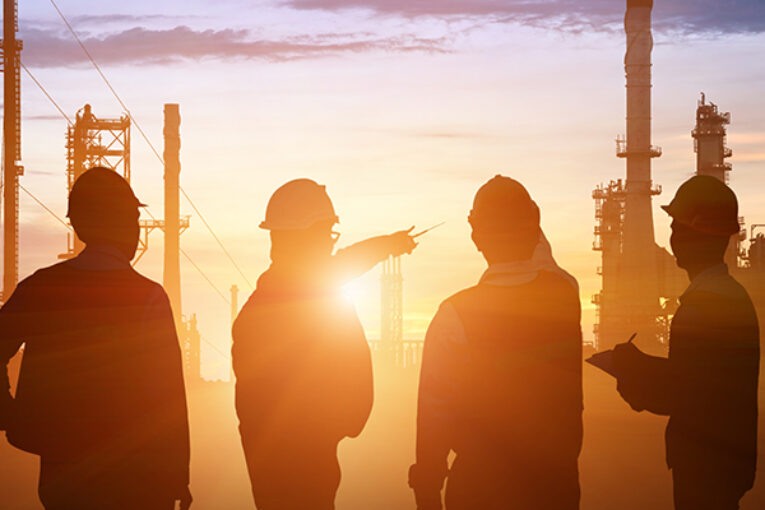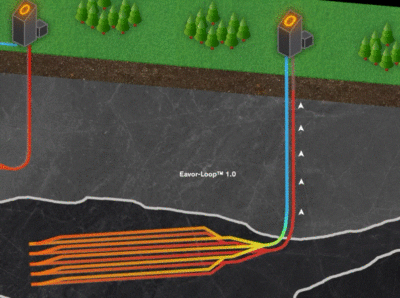
At the first mention of geothermal energy, for many, it can conjure up an image of early geo-exchange systems or residential heat pumps that require electricity from a grid to pull heat from the earth to heat a home or building. Not too efficient or scalable. Other forms come to mind like classical geothermal that is convection-based and requires specific geological conditions that few areas possess and are rarely located near densely populated urban areas that could make them practical and affordable.
Others may be aware of the 2019 announcement of the commercial scale conventional geothermal facility planned for the MD of Greenview, south of Grande Prairie using steam from brine reservoirs to generate five megawatts of electricity a year, enough to power about 6,800 homes. It attracted $25.45 million in funding through Natural Resources Canada and is a $90-million project.
Emerging Technology
Geothermal is being re-invigorated by new technology and one such technology being developed in Alberta is not as costly to construct and can be scaled up or down according to the needs of a project. In addition, it has applications to suspended wells that could be profitably re-used.
Previous geothermal tech like LEGE or low-enthalpy geothermal energy were inefficient as well as costly to build. LEGE tech involved pumping heated subsurface water to the surface and back down again for reinjection. It needed 50 to 70% of the energy that plant generated to pump the water. It wasn’t profitable, portable, or scalable which is a shame as geothermal has the potential to be an inexhaustible energy supply if harnessed.
One company, Eavor Technologies has developed promising geothermal technology, eliminating the energy-intensive pump that made LEGE so inefficient and increasing the ability to apply it in many locations around the globe in a capitally efficient manner at scale.
Why was Alberta a great place to develop Eavor’s tech?
Neil Ethier, Senior Business Development at Eavor says it is because Alberta has all the key ingredients:
“Alberta is a great place for it because we have the people and the knowledge and expertise. We are drilling geothermal wells in the exact same way that we drill an oil and gas well with the same men and women running the rigs, the same rigs that are drilling them, so the experience and the technical know-how that we have in Alberta is probably the best in the world.”
According to Ethier, the number one advantage that Alberta has is that Alberta is not blessed with an exceptionally high geothermal gradient. For every kilometre that you drill down, you gain a certain amount of heat. The average is about 30 degrees C per kilometre in Alberta. Some areas can get up to 35-38 maybe 40 degrees C per kilometre. Other jurisdictions, for example in the western United States they are markedly hotter. In some places, you can get 50- 60-70 degrees C per kilometre. So if you drill a 5 kilometre well in Alberta, the bottom hole temperature can be 100 -150 degrees. If you drill that same 5 kilometre well in a place in New Mexico or Nevada, it can be 350 degrees. So the efficiencies can be much greater according to different gradients. The challenge for Alberta is to overcome the fact that we don’t have an exceptionally high gradient.
Ethier says Alberta can overcome the gradient challenge in two ways.
“I think initially, for us to drill wells here, we need to have grants and subsidies put in place to make them economic which is not unlike what wind and solar did 10 years ago, which allowed the big uptake that they have today. The costs of those have dropped 70 to 90% in the last 10 years we expect the same thing to happen. We are going to be drilling and our advancements in drilling technology will pertain to drilling into the basement. Drilling 50 to 70 kilometres of the basement is hard granite drilling- in the same wellbore or wellbore pair. Over time, we’d see the same cost decreases happen that we’ve seen in oil and gas.”
Ethier cites examples like wells in the Permian that took 50-58 days to drill that now can be drilled in 8 days or Duvernay wells that originally cost $30 million are now a fraction of the cost.
The Eavor-Loop

Eavor’s key technology is called the Eavor-Loop. It is differentiated from traditional geothermal because it uses a conductive heat flow, rather than the traditional convective heat flow. It is a closed system and so there is no influx from the reservoir. It functions on a thermal siphon. The fluid or the water in the wellbore at depth is hotter, less dense, and moves upward. The cooler fluid on the surface is denser and pushes downward and the system runs by itself without a pump. In a Low Entropy plant, 50 to 70% of the electricity generated is used by ESPs pumping the fluids around the system. Ethier says without ESP’s, the energy output is much more efficient. There are no greenhouse gas or CO2 emitted whereas traditional geothermal and associated brine can have associated gases that are brought up from the subsurface.
Quick thermal predictability
In addition, the system has thermal predictability according to Ethier. With a known temperature gradient and thermal conductivity, he says you can predict within a couple of percent what your thermal output is going to be. This is different than traditional geothermal where there is a need for exploration for the right thermal gradient, for production tests over a year, the need to drill another exploratory well then drill an injection well for connectivity. In traditional geothermal, you’ll have decline after several years, not unlike a regular oil and gas reservoir. Ethier points out:
“This approach has a flat thermal output for 30 years. We design it for that- to be a flat thermal output for 30 years and then a very marginal decline after 30 years. So it is an intergenerational, bunker fuel supply. This is what we like to call it.”
Eliminating the footprint concern of renewables
Ethier claims Eavor-Loop geothermal’s footprint is 35 times more efficient than a typical solar array and about 300 times more efficient than a wind farm when calculating peak megawatts per hectare multiplied by a capacity factor. For onshore wind, they use a 35% capacity factor, for solar 29%. It has a very small, benign surface footprint because all of the energy extraction happens in the subsurface so you don’t see it versus a solar or a wind farm where you see it all on the surface.
Application – “behind the fence”
When asked whether the best use of the Eavor-Loop technology is to deliver electricity to a grid, Ethier replied that in Alberta the most efficient use would be a “behind the fence” application as per EUC regulations. Examples might be a large facility-a midstream gas plant or industrial plant or a campus that has anywhere from one to 5 megawatts of draw and would be paying for power generation plus the cost of powerline infrastructure plus if they are considered a large emitter and producing over 100,000 tons of CO2 per year they could benefit from compliance elements like a carbon tax credit.
The most challenging application for Eavor-Loop is a direct to the grid utility-grade market because of deregulated pricing in Alberta. Data Farms are good possible applications and there are potential mine applications in neighboring provinces.
Collaboration with COSIA and C-FER Technologies
Eavor is working with COSIA and C-FER technologies to validate their technology and potentially use it in the industrial process – likely for heat in the oilsands. It’s a great story that one of Canada’s premier industries can use geothermal to decarbonize the chain of extraction.
Ethier says phase two of the COSIA feasibility study will be completed and released sometime in Q1 of 2022. At that point, they would be looking to advance even further: potentially drilling a strat well in the area to see what the temperature gradients are- at what depths and how fast they can be drilled and then moving toward one of those member companies to do a pilot test on an application.
A high score from the Federal government
One wonders how difficult it will be to have the potential of geothermal tech recognized by Federal ministers. Ethier says they have had a breakthrough at the Federal level. Eavor lite was drilled in 2019 and it was drilled with funding from Alberta Innovates, Admissions Reduction Alberta, and Sustainable Development Technology Canada. He points out:
“We’ve just been approved for another grant funding to drill the Eavor-Loop 2.0 – drilling into the granitic basement. We have been given that $4.3 million grant to push that forward and so I think federally the story is resonating very well. I think that the desire is there to help the industry reduce emissions and if we could efficiently do this then they are all for it.”
On the topic of an energy transition, Ethier is clear about the foundations of the success of geothermal:
“We prefer to call it an energy diversification rather than energy transition. Alberta has been an energy powerhouse for decades. We want to continue that narrative and be the leader in the geothermal space. We want to create an export industry where the knowledge, intellectual property, and technology sit here in Calgary. We can be able to export it to the world instead of importing solar panels from China or wind turbines from Korea or Germany. We would see revenues coming into the province and the country instead of it moving in the other direction. That’s why we’re in Alberta. I think 95% of our company is ex-oil and gas people- that is the story of us growing and being part of that energy diversification story.”
Maureen McCall is an energy professional who writes on issues affecting the energy industry
You can read more of the news on source



